Meet the floral stars of the show and discover the top take-home plant trends from this year’s Hampton Court Garden Festival
 RHS shows are a melting pot for fresh ideas and inspiration, and RHS Hampton Court Palace Garden Festival this year is no exception. It brings together some of the top plantspeople from across the UK, all with the aim of packing a punch in a small space. So what plants have they picked? Here’s a roundup of some of the hottest plant trends to take home from this year’s show, whether they’re recurring themes across the show, or standouts that are making visitors stop and stare.
RHS shows are a melting pot for fresh ideas and inspiration, and RHS Hampton Court Palace Garden Festival this year is no exception. It brings together some of the top plantspeople from across the UK, all with the aim of packing a punch in a small space. So what plants have they picked? Here’s a roundup of some of the hottest plant trends to take home from this year’s show, whether they’re recurring themes across the show, or standouts that are making visitors stop and stare.
The top 12 plants:
1. Achillea
2. Actaea simplex (Atropurpurea Group)
3. Agapanthus
4. Agastache
5. Allium sphaerocephalon
6. Calycanthus ‘Aphrodite’
7. Deschampsia cespitosa
8. Eryngium
9. Penstemon ‘Heavenly Blue’
10. Rosa ‘Night Owl’
11. Scabious
12. Betonica ‘Hummelo’
1. Achillea
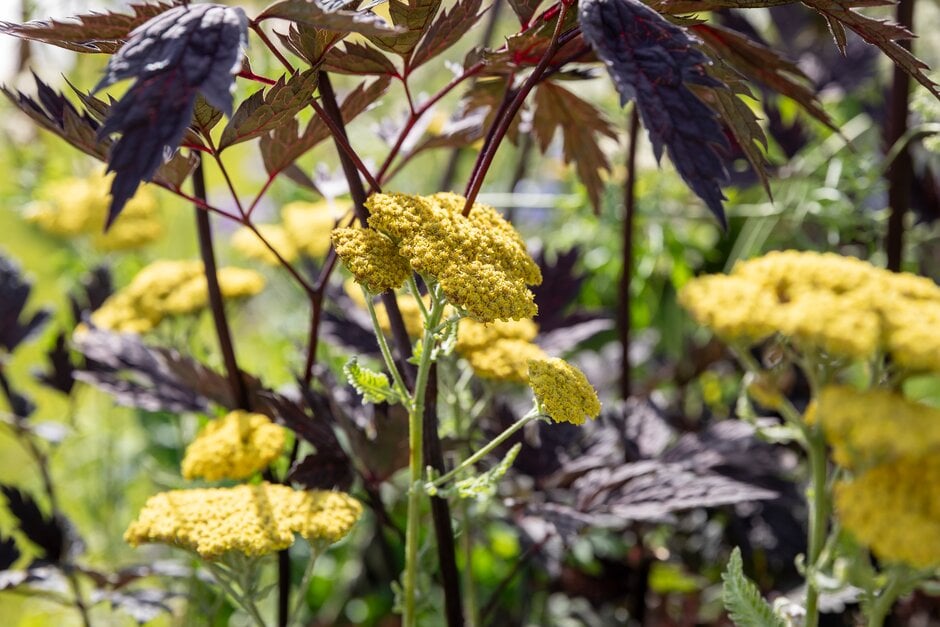
Achillea could just be the most abundant plant at Hampton this year, and with good reason. Available in a shade to suit every setting, these reliable and low-maintenance perennials have a long flowering season, are highly attractive to pollinating insects, and tolerate a wide range of soils.
In her RHS Iconic Horticultural Hero Garden, Carol Klein punctuates drifts of blue and purple Eryngium zabellii, Salvia nemorosa ‘Caradonna’ and Nepeta with Achillea ‘Salmon Beauty’. In the RHS Wildlife Garden, the same cultivar is used alongside Verbascum ‘Helen Johnson’ and Deschampsia cespitosa ‘Bonzeschlier’ to create a dreamy swathe of peachy shades. In The Oregon Garden, bright yellow Achillea ‘Moonshine’ creates dramatic contrast planted amongst Actea simplex, while ‘Cerise Queen’ tones with purple-leafed sedums.
Key qualities: Great for pollinators, versatile and low maintenance
See it in: RHS Iconic Horticultural Hero Garden, Hurtigruten: The Relation-Ship Garden, The Oregon Garden, RHS Wildlife Garden, The Inghams Working With Nature Garden, Sensory Pocket Planting
2. Actaea simplex (Atropurpurea Group)
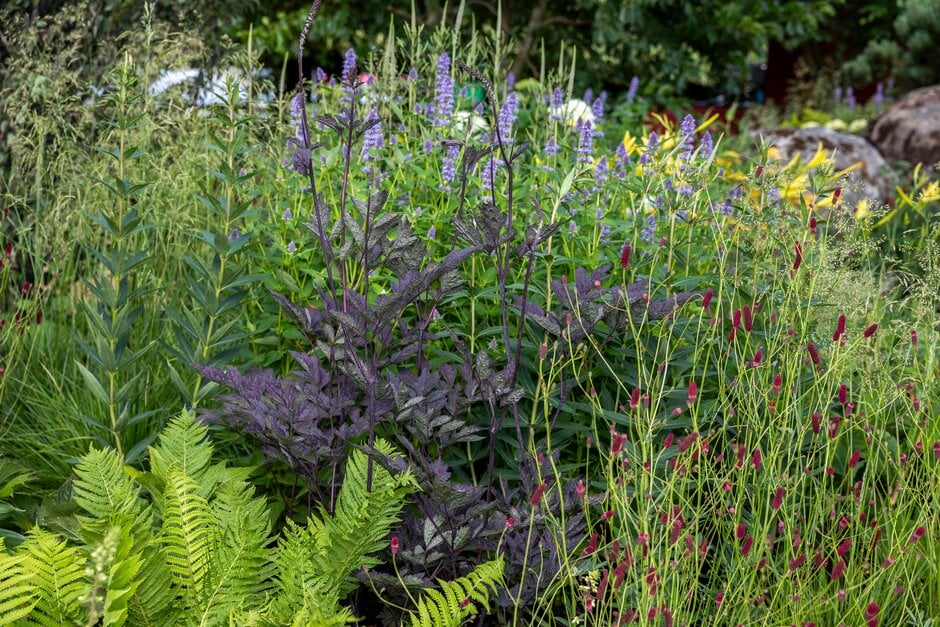
This striking perennial is just as much about foliage as it is about flowers, with its deep bronze-purple leaves making a dramatic puncuation point in swathes of perennial planting. In The Relation-Ship Garden, Actaea simplex ‘Brunette’ mixes beautifully with Agastache ‘Blue Fortune’ and Sanguisorba, while Carol Klein creates intense drama in a part-shaded corner of her Iconic Horticultural Hero Garden by combining Actea simplex ‘Pink Spike’ with Thalictrum ‘Splendide’ - one of the most eye-catching plant combinations at the festival this year.
“I love its structure – it’s positively statuesque – and I love its colour; and when it flowers, the scent is out of this world”
– Carol Klein on Actaea simplex ‘Pink Spike’
Key qualities: Dramatic foliage, good in shade, flowers late in the season
See it in: RHS Iconic Horticultural Hero Garden, Hurtigruten: The Relation-Ship Garden, The Oregon Garden
3. Agapanthus
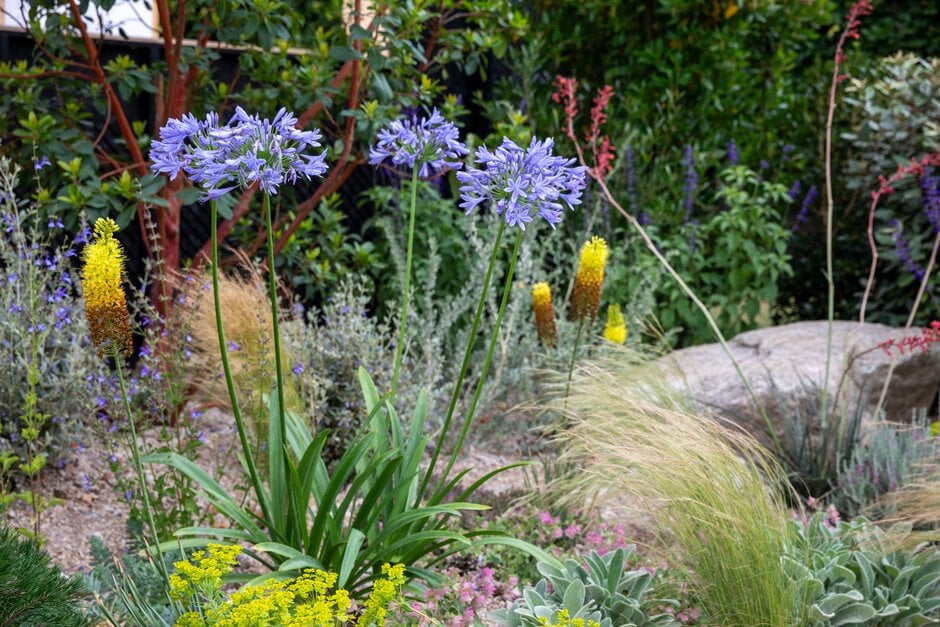
It’s still early in the flowering season for agapanthus, and these stately perennials are peppered throughout the showground, in show gardens and trade stand displays alike. Agapanthus are enduringly popular for their stunning heads of pure blue, purple or white flowers, held proudly aloft on tall stems. Agapanthus ‘Black Jack’ even won top spot as RHS Plant of the Year 2023.
Drought resistant, heat tolerant and easy to grow, they’re a plant for the future – reflected in their inclusion in the RHS Resilient Garden, where they sprout from crushed concrete amongst yellow Eremurus and lime-green euphorbias. Agapanthus are great for container growing, and dwarf forms are available for small spaces, such as the ‘Poppin’ Purple’ that can be found in Aphrodite’s Garden within the Sensory Pocket Planting. The taller ‘Dokter Brouwer’ forms the backbone of a mouthwatering swathe of drought-resistant blues and purples in the Shapes of Blue sensory pocket.
Key qualities: Drought resistant, great for containers
See it in: RHS Resilient Garden – Supported by ACO, Sensory Pocket Planting
4. Agastache
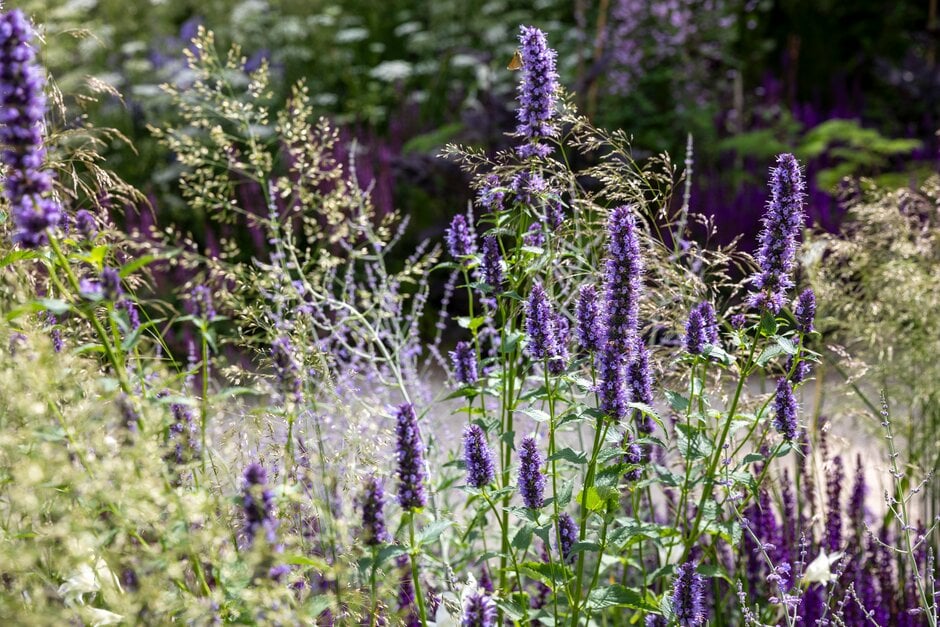
As well as Agastache ‘Blue Fortune’ pairing beautifully with Actaea simplex ‘Brunette’ in The Relation-Ship Garden, Agastache ‘Blackadder’ was one of the stars of the show in Carol Klein’s RHS Iconic Horticultural Hero Garden. Its column-shaped blue flowerheads, held on tall stems, emerge from the swathes of blues and purples to create height; attracting droves of butterflies, and mixing divinely with the feathery heads of Deschampsia cespitosa ‘Goldschlier’.
Agastache is a fantastic perennial for pollinators, with dwarf forms available for containers and small spaces, as can be seen in the RHS Resilient Garden.
Key qualities: Great for pollinators
See it in: RHS Iconic Horticultural Hero Garden, Hurtigruten: The Relation-Ship Garden, The Oregon Garden, RHS Resilient Garden – Supported by ACO
5. Allium sphaerocephalon
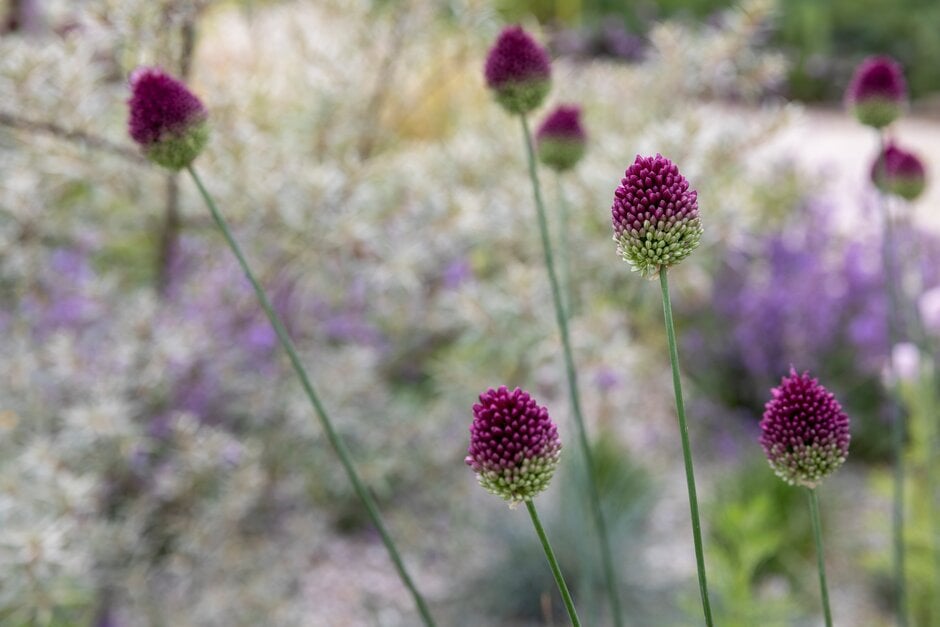
A more unusual but increasingly popular alternative to traditional globe-headed alliums, Allium sphaerocephalon bears smaller heads on straight, amazingly slender stems. The flowers start lime green green and mature to plum-purple, with the upper flowers maturing first, giving an attractive two-tone effect in the flowerheads. While larger globe-headed alliums are a staple of the herbaceous border, this daintier cousin is ideal for prairie planting and gravel gardens.
In the RHS Iconic Horticultural Hero Garden it rises above Nepeta and tones with purple-leafed Eucomis in Beth-Chatto-style planting, while in the RHS Resilient Garden it surprises and delights springing up among courgettes and other edibles, reflecting its common name of round-headed garlic and drawing bees in to pollinate the vegetables.
Key qualities: Architectural flowerheads, attractive to bees
See it in: RHS Iconic Horticultural Hero Garden, RHS Resilient Garden – Supported by ACO
6. Calycanthus ‘Aphrodite’
.jpg)
Named after the Greek goddess of beauty, this rarely-seen but stunning flowering shrub is turning heads at this year’s show. Found in Aphrodite’s Garden within the Sensory Pocket Planting, Calycanthus also forms a centrepiece in The Relation-Ship Garden, where it sits solitary and majestic beside the water’s edge. Upright branches bear intriguing magenta-pink flowers amongst lush green leaves.
 This multi-stemmed deciduous shrub, also known as sweetshrub, has a sweet, fruity fragrance and leaves that turn golden in autumn. If you’re looking for something a little different, and if reactions at Hampton are anything to go by, this unusual shrub is sure to inspire curiosity and wonder in all who see it.
This multi-stemmed deciduous shrub, also known as sweetshrub, has a sweet, fruity fragrance and leaves that turn golden in autumn. If you’re looking for something a little different, and if reactions at Hampton are anything to go by, this unusual shrub is sure to inspire curiosity and wonder in all who see it.
Key qualities: Unusual flowering shrub, long flowering season, autumn colour
See it in: Hurtigruten: The Relation-Ship Garden, Sensory Pocket Planting
7. Deschampsia cespitosa
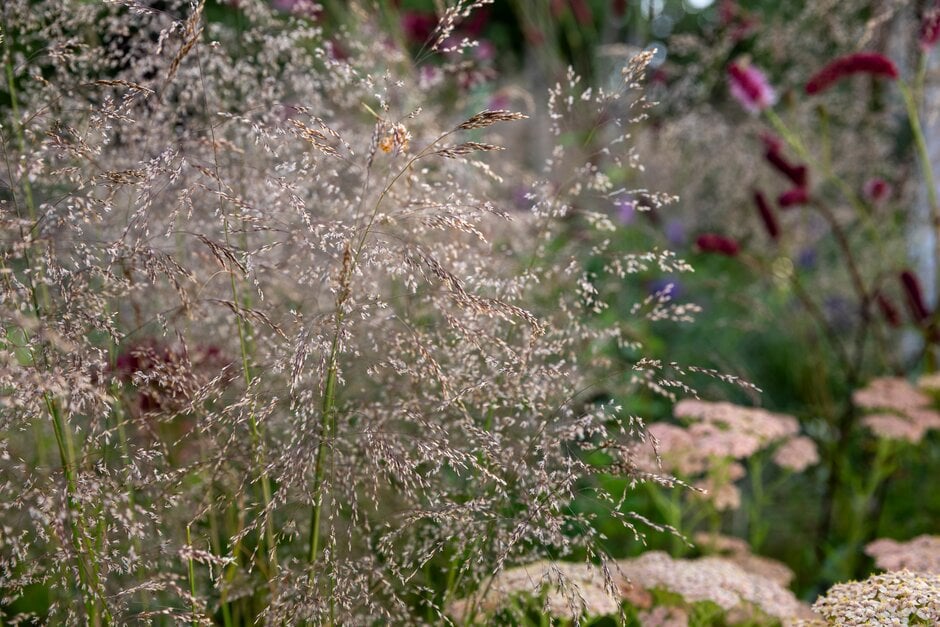
Ornamental grasses are wonderfully useful for breaking up perennial planting schemes to provide lightness and texture, and the grass that really starred at Hampton this year was tufted hair grass, Deschampsia cespitosa. Its gorgeously delicate, feathery heads can be spotted in many of the show gardens.
While ‘Goldschlier’ beautifully offsets Agastache ‘Blackadder’ in the RHS Iconic Horticultural Hero Garden, the RHS Wildlife Garden uses ‘Bronzeschlier’ to great effect, combining it with Verbascum ‘Helen Johnson’, Achillea ‘Salmon Beauty’ and Sanguisorba menziesii, which pick out the peach and bronze tones in the Deschampsia to create one of the most pleasing plant combinations at the show this year.
Key qualities: Adds airiness and texture to planting, tolerant of part shade
See it in: RHS Iconic Horticultural Hero Garden, Hurtigruten: The Relation-Ship Garden, RHS Resilient Garden – Supported by ACO, RHS Wildlife Garden, The Cancer Research UK Legacy Garden, Korea LH Garden (garden with land), The Inghams Working With Nature Garden
8. Eryngium
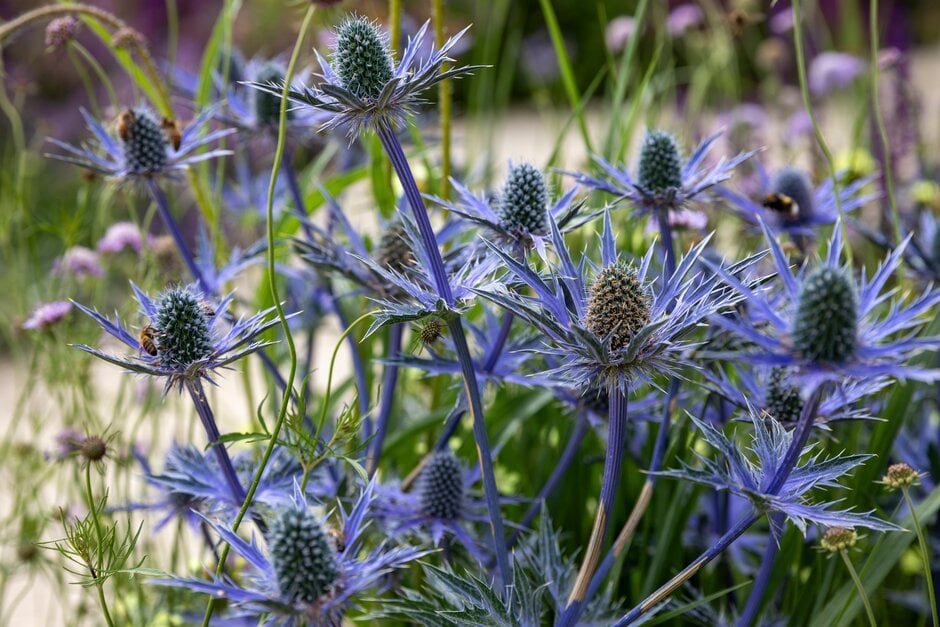
Eryngium or sea holly is a hero of Carol Klein’s RHS Iconic Horticultural Hero Garden. This tough perennial has a lot going for it – it’s drought tolerant, low-maintenance, and absolutely irresistable to bees. The domes of tiny flowers are surrounded by a ruff of spiky bracts, making it a strikingly architectural plant, while the electric blue stems of species such as Eryngium x zabelii are just as much of a wonder as the flowers. Leaving the plant skeletons in tact over winter provides continued structural interest.
Sea holly thrives in dry borders and gravel gardens, while dwarf varieties such as ‘Blue Hobbit’, growing in Shapes of Blue within the Sensory Pocket Planting, are ideal for containers.
Key qualities: Drought resistant, dwarf varieties great for containers, winter interest
See it in: RHS Iconic Horticultural Hero Garden, Sensory Pocket Planting
9. Penstemon ‘Heavenly Blue’

There is something of a blue theme at this year’s show, and this stunning penstemon was bang on trend. Spotted in The Oregon Garden, Penstemon ‘Heavenly Blue’ is remarkable for its almost pure blue flowers – unusual in a penstemon – and also for its dwarf, low-growing habit, which makes it perfect for containers and for the front of borders. Both of these uses are showcased in The Oregon Garden. More drought-resistant than some broader-leafed penstemons, ‘Heavenly Blue’ also suits a gravel garden.
Key qualities: Unusual blue flowers, great for containers
See it in: The Oregon Garden
10. Rosa ‘Night Owl’
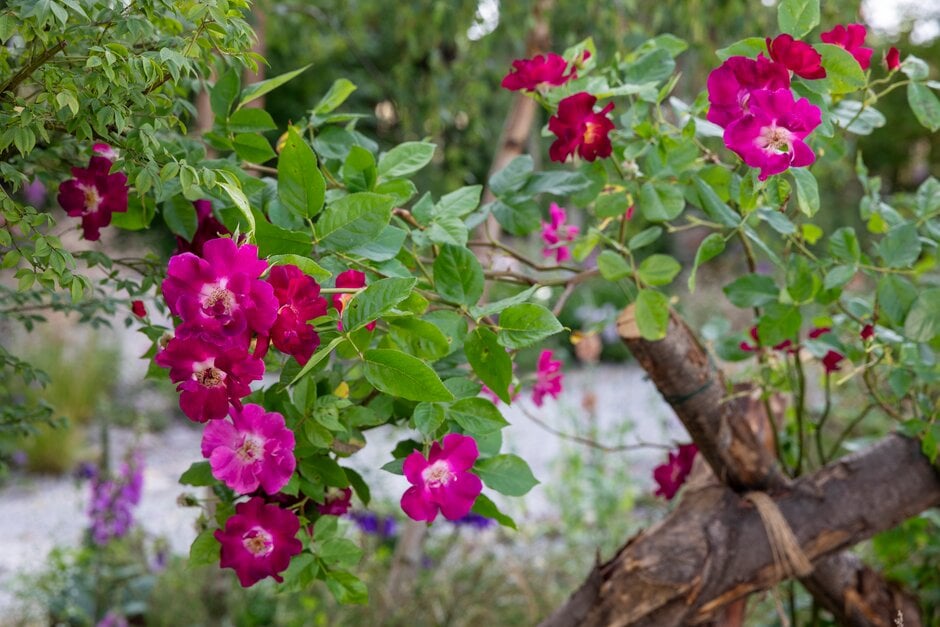
Roses are iconic of the RHS Hampton Court Palace Garden Festival. The hottest new varieties from an array of top breeders can be explored in the dedicated Festival of Roses marquee, while in the gold-award-winning Landform Mental Wealth Garden, Rosa damascena combines with lavender, Agastache and Echinacea to create a picturesque sensory oasis for a small but calming space.
One rose that stands out is the beautiful Rosa ‘Night Owl’ in the RHS Wildlife Garden, growing in an arc that is naturalistically draped over a simple, rustic wooden tripod frame. Rich, velvety crimson petals surround a plethora of golden stamens, which provide abundant food for pollinating insects.
The simple, open style of the semi-double blooms makes ‘Night Owl’ look natural enough for informal or wildlife gardens, while the incredible colour means it would transfer equally well to a more formal ornamental planting. The combination with Sanguisorba menziesii and Cosmos ‘Chocamocha’, which pick out the burgundy tones in the rose’s young petals, is inspired.
Key qualities: Great for pollinators, excellent disease resistance
See it in: RHS Wildlife Garden
11. Scabious
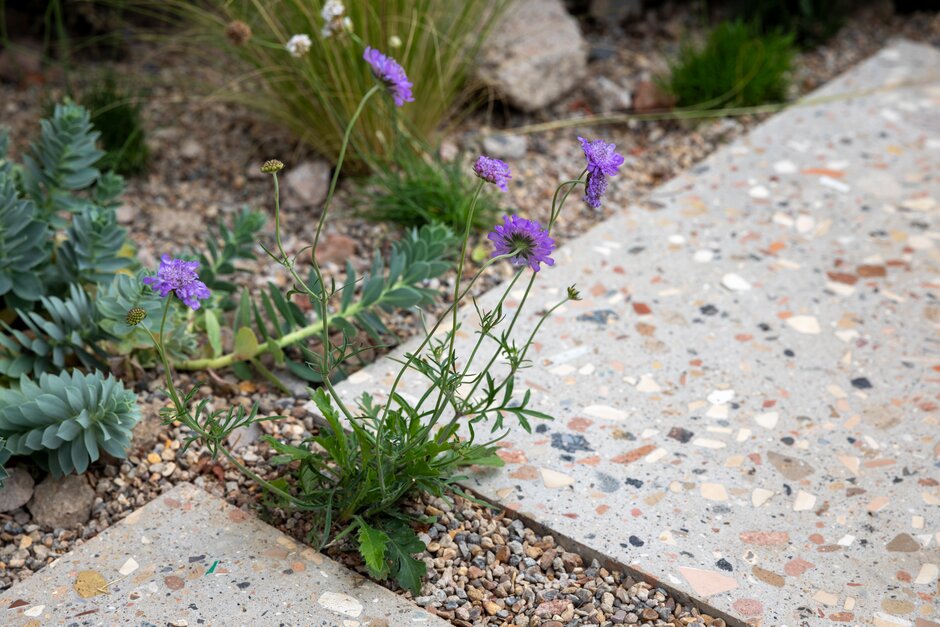
Scabious is another plant that is all over the showground this year. A seriously underrated perennial, scabious has an impressively long flowering season that lasts from June into the autumn, is fabulous for pollinators, is surprisingly drought-tolerant, and thrives in nutrient-poor soils or gravel as well as in humus-rich beds – overall, a tough and undemanding perennial that works hard.
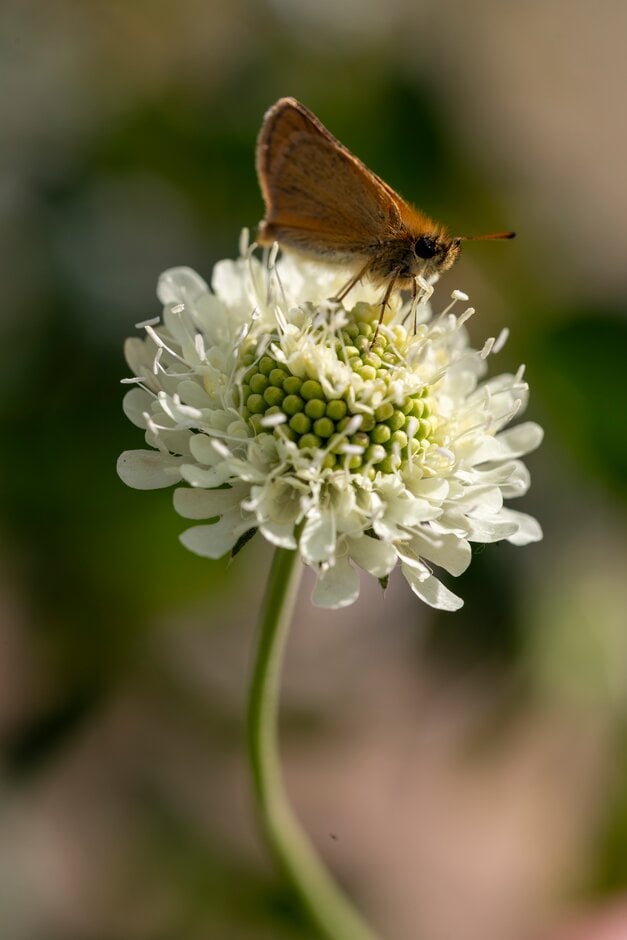 Carol Klein uses both the lilac Scabiosa incisa ‘Kudo’ and the pale yellow Scabiosa columbaria subsp. ochroleuca ‘Moon Dance’ in her Iconic Horticultural Hero Garden; intermingled with Salvia nemorosa ‘Caradonna’ and Nepeta ‘Walker’s Low’ to create a gorgeous contrast of colours and flower shapes.
Carol Klein uses both the lilac Scabiosa incisa ‘Kudo’ and the pale yellow Scabiosa columbaria subsp. ochroleuca ‘Moon Dance’ in her Iconic Horticultural Hero Garden; intermingled with Salvia nemorosa ‘Caradonna’ and Nepeta ‘Walker’s Low’ to create a gorgeous contrast of colours and flower shapes.
Aphrodite’s Garden in the Sensory Pocket Planting also uses both the lilac Scabiosa caucasia ‘Perfecta Blue’ and the pale yellow Scabiosa columbaria subsp. ochroleuca, while The Oregon Garden uses the dwarf form ‘Butterfly Blue’ at the front of the border.
Key qualities: Drought resistant, great for pollinators, thrives in poor soils
See it in: RHS Iconic Horticultural Hero Garden, RHS Resilient Garden – Supported by ACO, The Oregon Garden, Sensory Pocket Planting
12. Betonica ‘Hummelo’
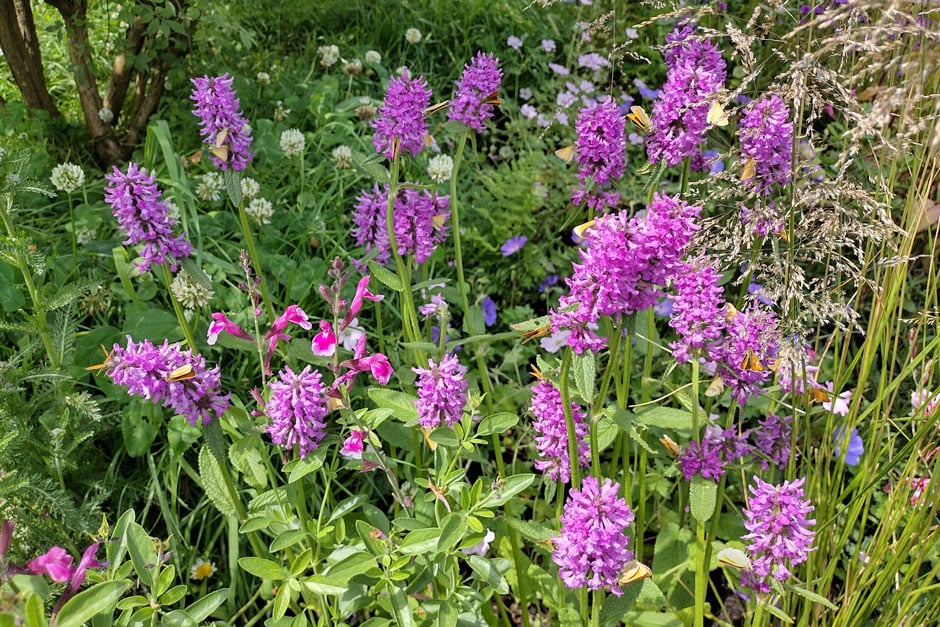
Betonica ‘Hummelo’ has been causing quite a stir in the RHS Wildlife Garden, with visitors marvelling at a single plant playing host to more than a dozen skipper butterflies at once. ‘Hummelo’ is an improved, more floriferous cultivar of a British native wildflower, betony, and was discovered by visionary landscape designer Piet Oudolf. This hardy perennial is good in poor soils, doesn’t need much water, is brilliant for insects, and is closely related to the ever-popular salvia – if you like, a British native salvia equivalent.
The plant forms a pleasing compact clump that is as at home at the front of a herbaceous border as it is in a wildlife garden, with short, stout pink-purple flower spikes held on stems punctuated by pairs of toothed leaves. In the RHS Wildlife Garden, Jo Thompson creates a beautifully natural effect by surrounding it with white clover.
Key qualities: Great for pollinators, low maintenance, good in part shade
See it in: RHS Wildlife Garden
About the author – Olivia Drake
Olivia is digital editor for science and horticulture. With a plant sciences background, she is professionally trained as a botanical horticulturist and has worked in public gardens around the UK and abroad. She is passionate about unusual plants and the role gardening can play in conservation.
You might also be interested in...

